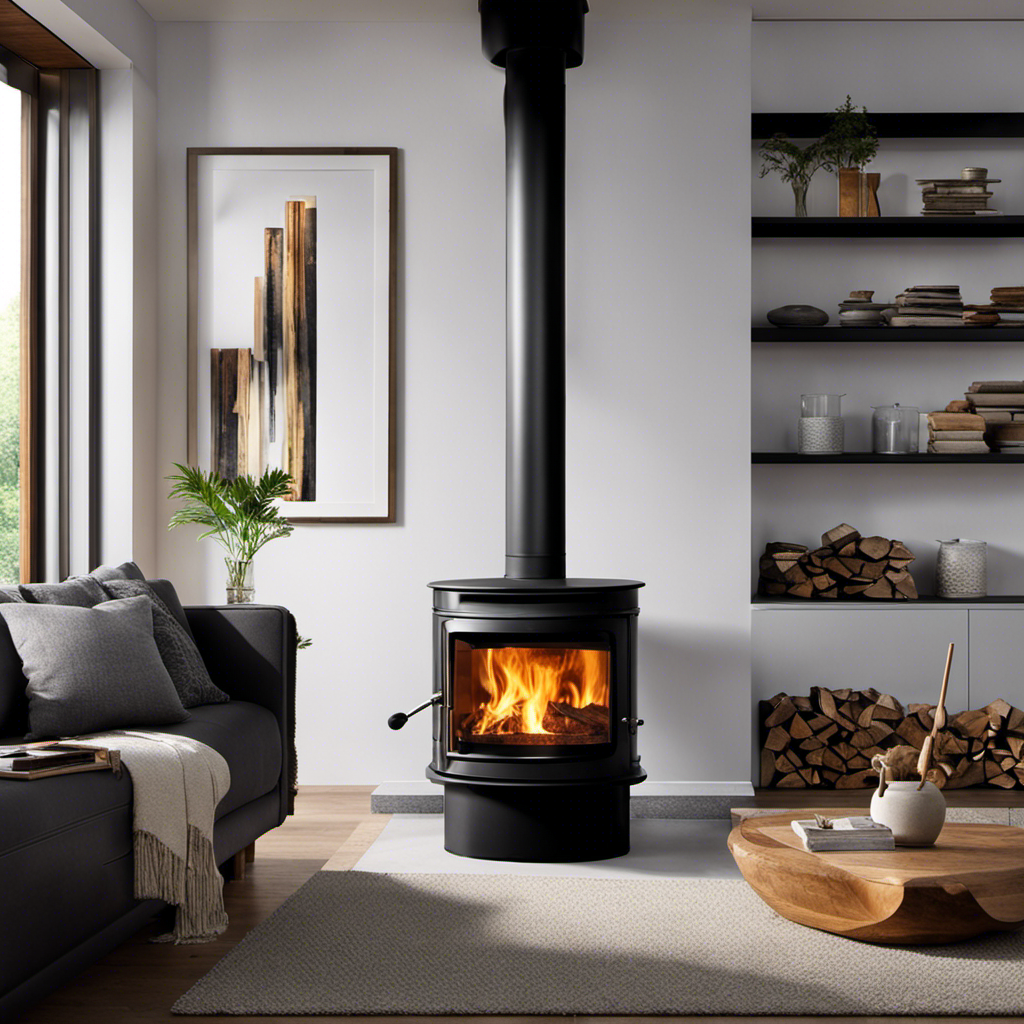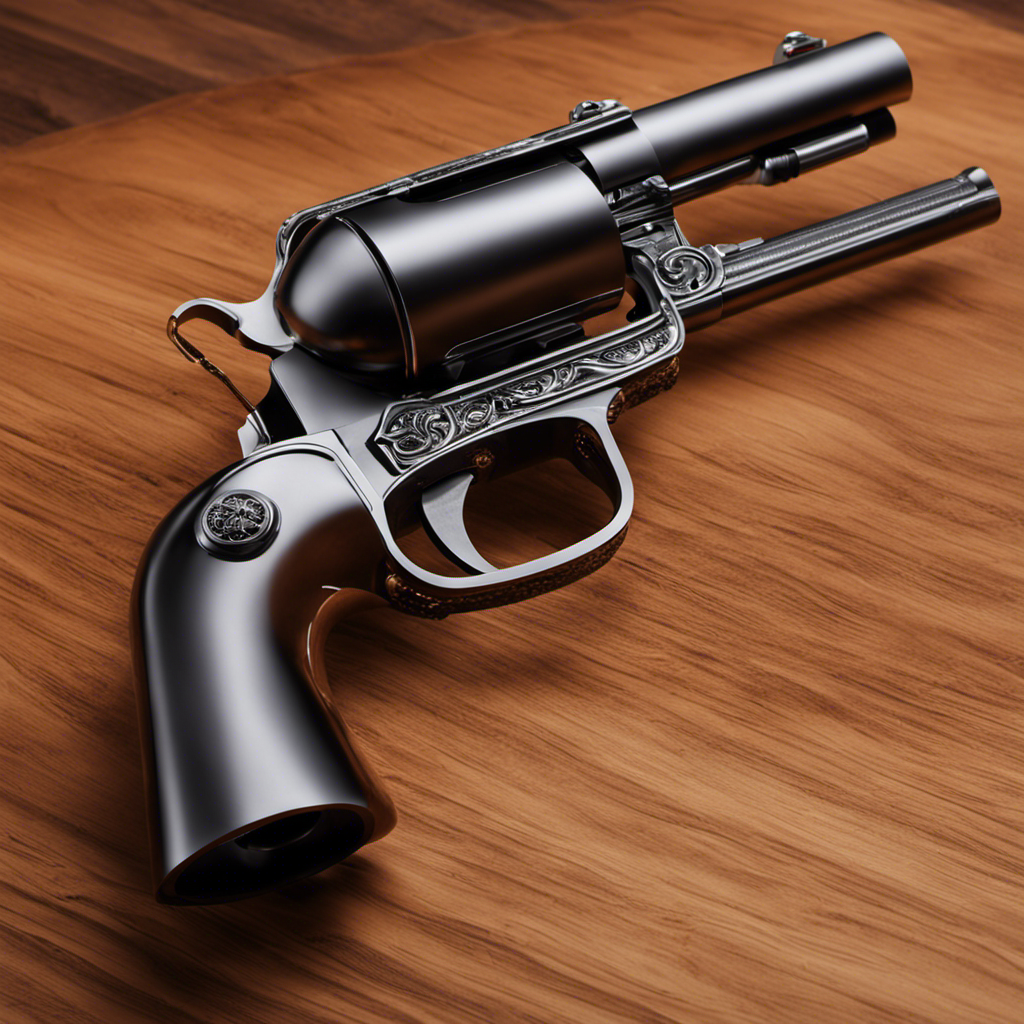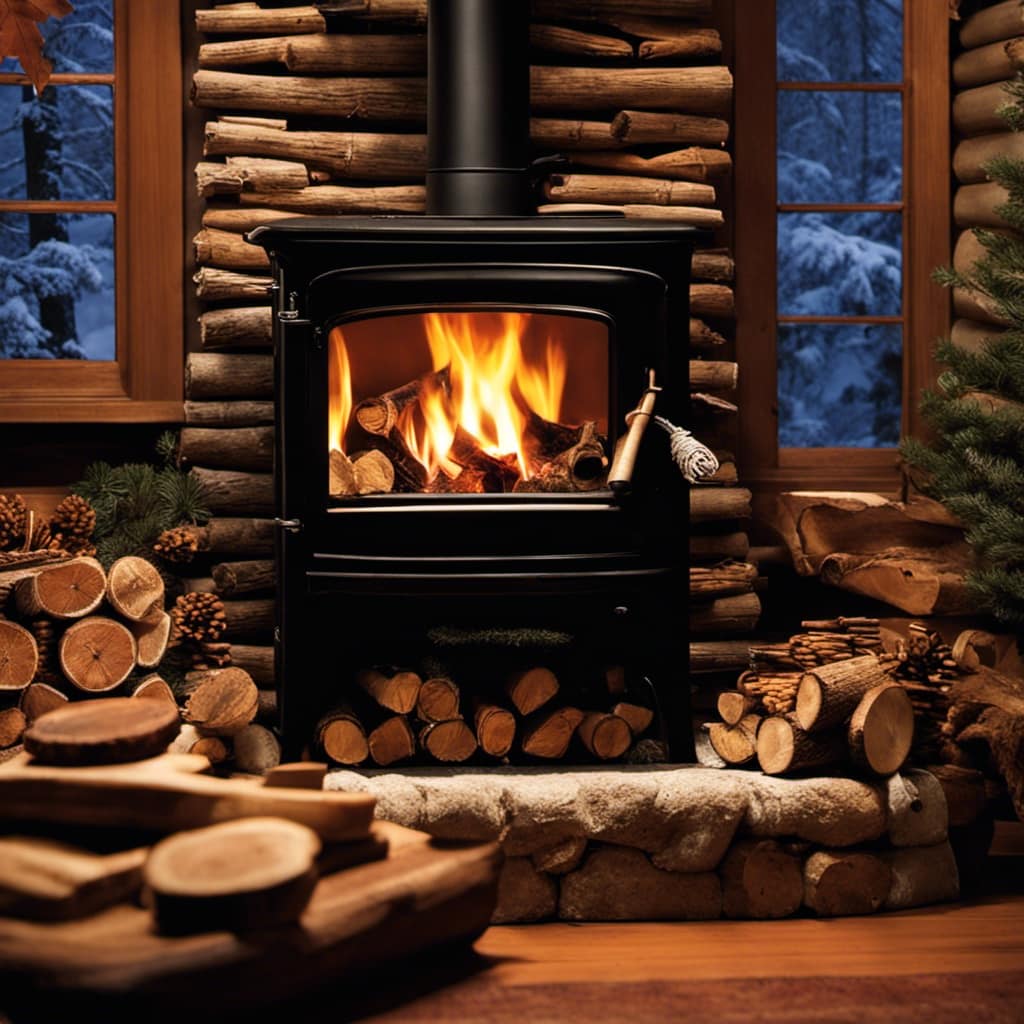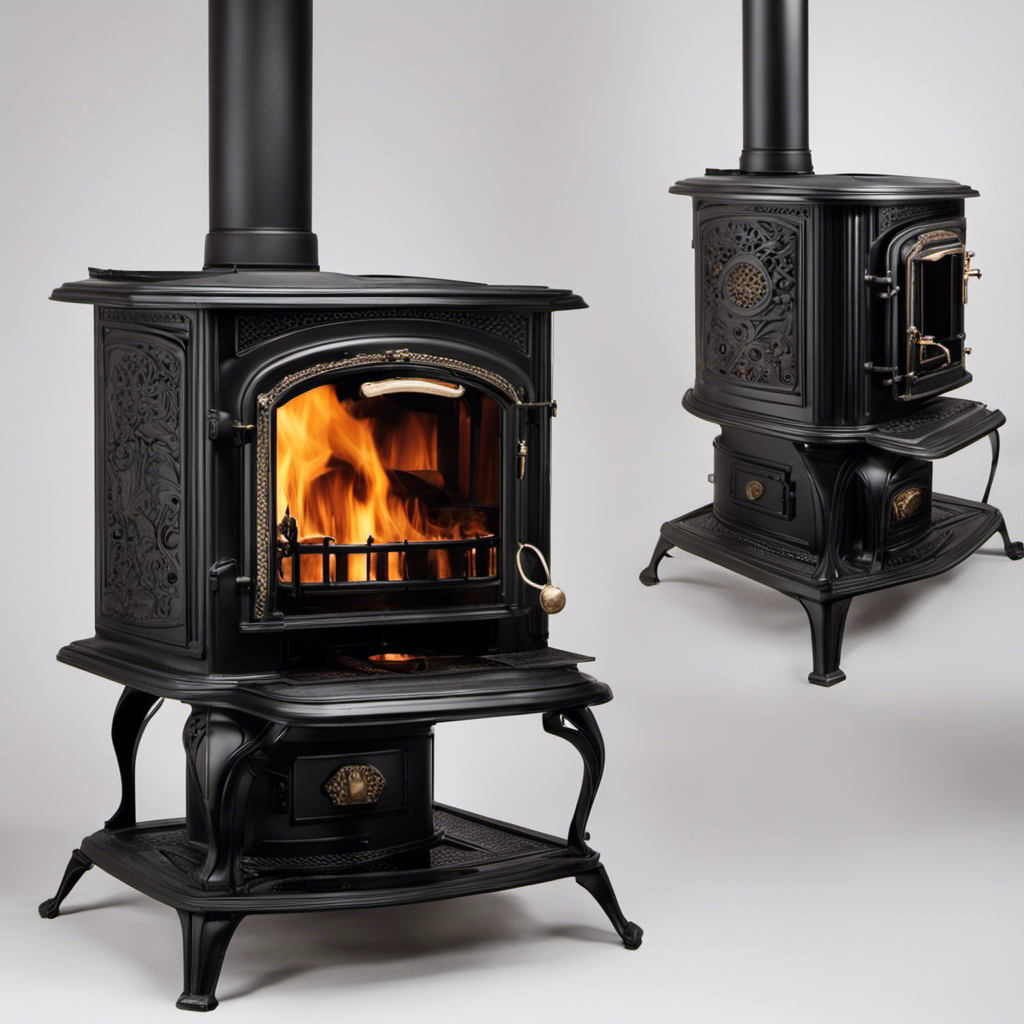So, you’re thinking about adding some warmth and charm to your living space with a wood stove installation? Great decision! However, before you start splitting logs for firewood, we need to discuss BTUs.
Understanding the importance of BTUs in wood stove selection is crucial. In this article, I’ll guide you through the process of calculating BTUs for your house. We’ll assess your heating needs, calculate the square footage, and determine the insulation factor.
By the end, you’ll be equipped to select the perfect wood stove BTU output for your home. Let’s get calculating!
Key Takeaways
- BTUs are units used to measure heat output
- Selecting the right wood stove requires calculating the BTUs needed based on the size of the space and desired temperature
- Square footage directly affects the amount of heat required
- Insulation factor plays a role in evaluating overall energy efficiency and heating needs
Understanding BTUs and Their Importance in Wood Stove Selection
I need to understand how many BTUs are necessary for my wood stove selection, so that I can effectively heat my home.
When it comes to wood stoves, it’s important to understand the heat output and how to measure stove efficiency. BTUs, or British Thermal Units, are the units used to measure heat output. It’s the amount of heat required to raise the temperature of one pound of water by one degree Fahrenheit.
The heat output of a wood stove is typically measured in BTUs per hour. To select the right wood stove for your home, you need to calculate the BTUs needed based on the size of your space and the desired temperature. This will ensure that your wood stove is efficient enough to effectively heat your home.
Assessing the Heating Needs of Your House
Calculating the heating needs of my house requires determining the square footage and insulation level to ensure I select the right wood stove with sufficient BTUs.
To evaluate energy efficient heating options, I need to estimate the fuel consumption of different wood stoves. Here are three key factors to consider:
-
Square footage: The size of your house directly affects the amount of heat required. Larger houses need stoves with higher BTU outputs.
-
Insulation level: Good insulation reduces heat loss, meaning you can choose a wood stove with lower BTUs. Conversely, poor insulation requires a higher BTU output.
-
Climate: If you live in a colder climate, you’ll need a wood stove with a higher BTU rating to keep your house warm during the winter.
Calculating the Square Footage of the Area to Be Heated
To accurately determine the size of the space I need to heat, I can measure the square footage of the area. This is an essential step in calculating the heating load for my wood stove. By knowing the square footage, I can evaluate the energy efficiency required for effective heating.
To calculate the square footage, I need to measure the length and width of each room and multiply them together. Additionally, I should consider any areas that may need extra heating, such as poorly insulated rooms or large windows.
Once I’ve determined the square footage, I can move on to determining the insulation factor of my house, which will further help me evaluate the overall energy efficiency and heating needs.
Determining the Insulation Factor of Your House
After evaluating the square footage of my house, I can now focus on determining the insulation factor to gauge its energy efficiency. When evaluating energy efficient insulation options, there are several factors to consider when calculating insulation needs:
-
R-Value: This measures the insulation’s ability to resist heat flow. The higher the R-Value, the better the insulation.
-
Climate: The climate you live in plays a crucial role in determining the insulation factor. Cold climates require higher R-Values to prevent heat loss.
-
Building Materials: The type of materials used in construction affects the insulation needs. Different materials have different insulation properties.
By considering these factors, I can choose the most suitable insulation option for my home, ensuring maximum energy efficiency.
Now, let’s transition into the next section to discuss selecting the right wood stove BTU output for my home.
Selecting the Right Wood Stove BTU Output for Your Home
I’m considering different wood stove options with the appropriate BTU output for my home. Choosing the right size wood stove is essential to ensure optimal heating and energy efficiency. One important factor to consider is the climate in which the wood stove will be used. To help me make an informed decision, I have created a table comparing different BTU outputs based on climate conditions:
| Climate | BTU Range | Recommendation |
|---|---|---|
| Cold | 30,000-60,000 | Higher BTU output is necessary to combat extreme cold temperatures and maintain a comfortable indoor environment. |
| Moderate | 20,000-40,000 | A mid-range BTU output is suitable for areas with moderate winter temperatures. |
| Mild | 10,000-30,000 | Lower BTU output is sufficient for regions with mild winters and less heating demand. |
Conclusion
In conclusion, when it comes to calculating BTUs for a wood stove for your house, it’s crucial to understand the heating needs of your space and consider the square footage and insulation factor.
By selecting the right wood stove BTU output, you can ensure efficient and effective heating for your home.
Just like choosing the perfect tool for a job, finding the right wood stove will provide the warmth and comfort your house deserves.
Logan’s affair with adventure began in childhood. He hailed from a small town where vast forests bordered one side and endless shores stretched on the other. His days were spent exploring uncharted woods, climbing tall trees, or listening to the tales of old sailors. This early immersion in a world brimming with stories and mysteries became the foundation of his passion for writing.











